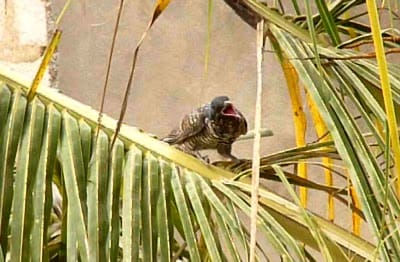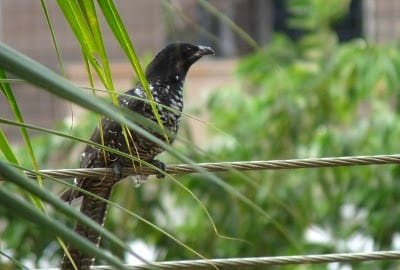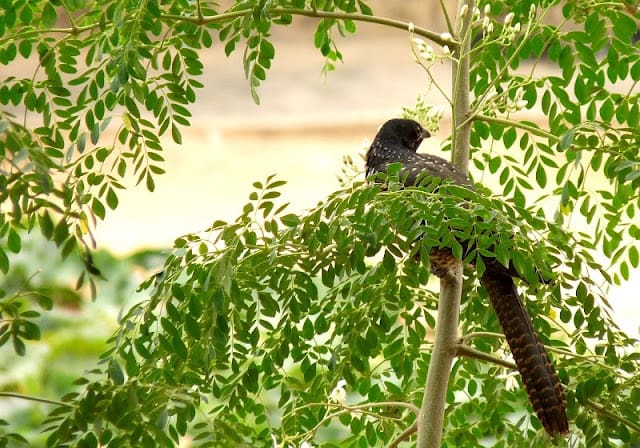How long before a koel discovers that it is not a crow?
The family of House Crows (Corvus splendens) in my yard is upset. For the past few weeks mother and father have been teaching their youngsters to fly. I have often seen the young crows follow their parents about, begging for scraps to the embarrassment of the adults whose intention was to show off how big their kids had grown. The chicks – they can no longer be called thus – are fully-fledged but only their uncertain flight and the gapes around their mouths tell us that they are not quite adults.
And then, of course, there are the calls. That’s how I found out that there was something amiss in the household.
Corvine prattle is endearing – at once harsh and squeaky with a note of desperation woven in. What I heard was puzzling – a strangled, hissing cry, like a serpent suddenly discovering its voice upon being electrocuted. That sound persisted all day but every time I looked out I only saw two adult crows peering anxiously into the crown of a coconut tree nearby. One morning, in an off-guard moment, the source showed itself. And I learned the reason for the crows’ embarrassment.
Though it kept company with the crows and followed them around begging for morsels, this individual (to the top right of the picture) was no crow. It was a young koel, dull black all over with a moult of white speckles, and the long tail characteristic of cuckoos. The iris was still dull – in adults it turns red.
Having been fed and raised by the crows, the young foster-chick spoke its parents’ language very fluently: in fact, it managed a rough caw now and then. The adult crows fed it on occasion but increasingly distanced itself from the vocal and demanding chick. For its part, the chick seemed surprised by the change in its parents’ attitude and pursued them without relent.
Each season the cycle repeats – a pair of breeding koels (Eudynamys scolopacea) sneaks into a tree bearing a crow’s nest. The male’s ku-oo call has long been celebrated in scripture and poesy; the female’s shrieking kik-kik-ki, though often heard, is rarely bothered with. The glossy black male, so crow-like at first glance, attempts to distract the crows, which give chase leaving the nest unattended. The speckled female hurriedly lays a single egg in the vacant nest. Usually, the crow’s eggs are left unmolested (some brood parasites replace a host’s egg with its own). Despite its formidable reputation for being crafty and guileful, the adult crow is naive in being unwise to the presence of the new egg. The chick hatches and is nurtured by the crows until it is fully fledged. Clearly, I was witnessing the denouement of this drama.
Being innocent of carnal knowledge, this chick apparently thought of itself as a crow. The hoodwinked parents had perhaps discovered otherwise.
How long before the young cuckoo discovered its true identity? And how would it go about the incredible life journey of finding and mixing with its own kind and encountering its future mate (or perhaps running into its biological parents – some observers have reported female koels feeding other, possibly younger individuals)? Soon, when hormones spur the drive to procreate, this once-confused chick will play the lead role in repeating the cycle of deception.
Are all cuckoos born with half a medallion and a life full of secrets to unravel?
Text and pictures by Beej
Founder-editor of The Green Ogre, Beej began this blog as a solo writing project in 2006. A communications professional, he has worked as a corporate storyteller, journalist, travel writer, cartoonist and photo-blogger. He was formerly the founder-editor of Yahoo India's travel site.






2 thoughts on “One flew over the crow’s nest”